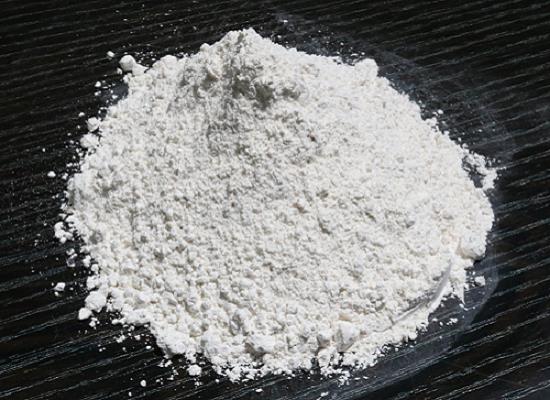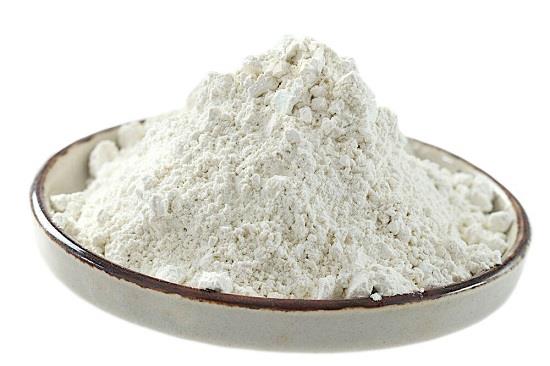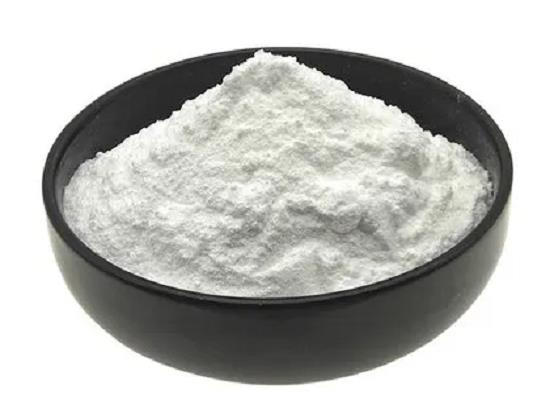Kaolin: Properties and Applications in Agriculture
General Description
Kaolin, a mineral predominantly composed of kaolinite, is a versatile substance with applications across various industries. It is known for its plasticity when mixed with water, making it valuable in paper production for filling and coating, ceramic manufacturing for whiteware and refractories, rubber for improving mechanical strength, and paints for controlling penetration and serving as an extender. Additionally, Kaolin has shown promise in agriculture as an effective additive alongside insecticides, particularly in managing insecticide-resistant pests like the navel orangeworm in almond orchards. Overall, Kaolin's unique properties make it an essential material in multiple sectors and a valuable tool in pest management strategies.

Figure 1. Kaolin
Properties
Kaolin, a mineral predominantly composed of kaolinite, manifests as a soft, white powder in its natural state. Examined under the electron microscope, it reveals hexagonal, platy crystals ranging from 0.1 to 10 micrometres in size, sometimes forming vermicular or booklike structures, and occasionally reaching millimeter dimensions. However, its natural composition often includes minerals like muscovite, quartz, feldspar, and anatase, with occasional yellow staining due to iron hydroxide pigments. When mixed with water (20-35%), kaolin becomes plastic, allowing it to be molded under pressure with shape retention upon release. Further water addition results in a watery suspension or slurry, with viscosity influenced by particle size and chemical additives. Historically mined in regions like France, England, Saxony, Bohemia, and the United States, notably in southeastern states, kaolin finds diverse applications across industries. In paper production, approximately 40% of kaolin is employed for filling and coating. As a filler, it integrates with cellulose fibers to enhance paper body, opacity, and printability. Conversely, in coating, it combines with adhesives to provide gloss, color, and improved printability, with particle sizes typically less than two micrometers. The ceramic industry extensively utilizes kaolin due to its high fusion temperature and white burning properties, making it ideal for whiteware (china), porcelain, and refractories. Its purity, devoid of iron and alkaline compounds, ensures desirable ceramic properties. In whiteware manufacturing, kaolin is blended with silica, feldspar, and ball clay to achieve necessary plasticity, vitrification, and firing characteristics. For refractories, kaolin is used alone. Kaolin also enhances rubber's mechanical strength and abrasion resistance when used as a filler, requiring exceptional purity and fineness. In paints, it serves as an extender and flattening agent, controlling penetration into paper in adhesives. Additionally, its fine particle size, whiteness, chemical inertness, and absorption properties render kaolin indispensable in ink, organic plastics, cosmetics, and various other products. 1
Applications in Agriculture
Kaolin, a naturally occurring clay, emerges as a promising solution in managing insecticide-resistant navel orangeworm (Amyelois transitella) in almond orchards, particularly in California's Central Valley. With the escalating resistance of this pest to pyrethroids like Bifenthrin, alternative methods are imperative to safeguard almond and pistachio crops. In a study assessing Kaolin's efficacy, researchers investigated its potential as an additive alongside insecticides to combat the growing threat of insecticide-resistant A. transitella. Two levels of Kaolin were tested in combination with either Bifenthrin or Chlorantraniliprole, a diamide insecticide, aiming to mitigate feeding damage and decrease the survival of resistant strains in laboratory and field settings. Results indicated that while both strains of A. transitella exhibited resistance, the combination of Kaolin with insecticides proved effective. Kaolin synergized with Bifenthrin, significantly reducing the survival rate of the resistant strain by 10.0%. Additionally, the field trials demonstrated that incorporating Kaolin with Chlorantraniliprole maintained its activity against the resilient pest, showcasing Kaolin's potential as a valuable tool in integrated pest management strategies. Despite Kaolin not directly reducing feeding damage, its addition to insecticides led to decreased survival rates compared to insecticide application alone. This suggests that Kaolin enhances the overall efficacy of insecticides, making them more potent against resistant strains of A. transitella. The findings underscore Kaolin's role as a supplementary tool in pest management, offering a sustainable and environmentally friendly alternative to conventional insecticides. By harnessing the properties of this natural clay, farmers can enhance the effectiveness of their pest control strategies while mitigating the risks associated with insecticide resistance. As agricultural industries continue to face challenges from evolving pest populations, the integration of Kaolin represents a promising approach to safeguarding crop yields and sustainability. 2
Reference
1. Encyclopaedia B. Kaolin: Uses, Benefits, and Safety Precautions. Britannica.
2. Bush DS, Demkovich M, Aldunate M, Siegel J, Berenbaum MR. Kaolin as a management alternative for insecticide-resistant navel orangeworm (Lepidoptera: Pyralidae). J Econ Entomol. 2023; 116(6): 2095-2103.
You may like
Related articles And Qustion
Lastest Price from KAOLIN manufacturers

US $0.00-0.00/KG2025-09-12
- CAS:
- 1332-58-7
- Min. Order:
- 1KG
- Purity:
- 98
- Supply Ability:
- 200MT

US $0.00-0.00/KG2025-07-07
- CAS:
- 1332-58-7
- Min. Order:
- 1KG
- Purity:
- 98.0%
- Supply Ability:
- 50000kg/month



